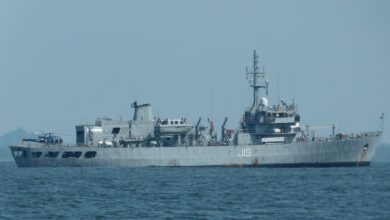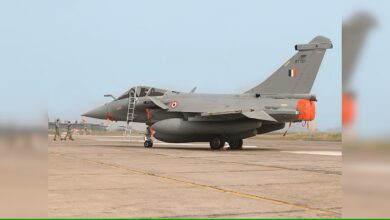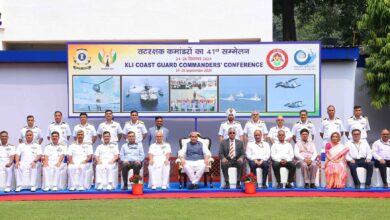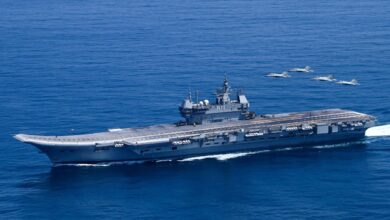Navy Plans Another Vikrant-Size Carrier Before Vikramaditya Retires

- The INS Vikrant, the country's first IAC, was put into service in September 2022 and is now going through aviation trials. It will probably be ready to use by the end of 2023.
- The Navy thought of an IAC-2 with a displacement of 65,000 tonnes, Catapult Assisted Take Off But Arrested Recovery (CATOBAR) for launching aircraft, and full electric propulsion.
The aircraft carrier INS Vikramaditya is about to leave the dockyard after a long repair. At the same time, the Indian Navy is finalising plans to repeat the order for an INS Vikrant-sized Indigenous Aircraft Carrier (IAC)-2 with some changes. Given the long timelines, this may be close to the time INS Vikramaditya leaves service, making it its replacement.
Admiral R. Hari Kumar, who is in charge of the Navy, said that the Navy will keep looking into the need for a larger and more powerful carrier while placing a second order for the INS Vikrant-sized carrier.
“If we have to design a new carrier, it will take time, and we’ll need to bring in new technologies because the current stopping gear and catapult system are changing. It will have a completely new look, and the places where ships are made will also need to be updated. So, we thought that if we put in a second order for the [INS] Vikrant, work would start quickly.
Admiral Kumar said last week at the Aero India show that the case will go faster, work can start right away, costs will go down a little, and we can make some improvements. He said that new technologies and drones that can be launched and retrieved from the carrier are improving operational capabilities.
He said that the original plan was for the IAC-2 to be bigger than the IAC-1. The INS Vikrant is about 44,000 tonnes, while the planned IAC-2 was about 65,000 tonnes.
The Indian Navy needs three aircraft carriers because it takes a long time to do maintenance on such a big ship, and sometimes there are also delays. Admiral Kumar said, “That can also be used.” With the INS Vikrant, Cochin Shipyard Limited (CSL) learned a lot about how to build an aircraft carrier, which would not go to waste if they got another order.
“So, we think we’ll go for a repeat order with better features, and in the meantime, we’ll figure out if we need a bigger carrier. INS Vikramaditya may also reach the end of its life before a third aircraft carrier is ready and put into service. Then we’d have to build another carrier,” said Admiral Kumar.
Officials at CSL have said they are confident that, once the order is placed, they could build another carrier about the size of the INS Vikrant with only minor changes in eight years.
The INS Vikrant, the country’s first IAC, was put into service in September 2022 and is now going through aviation trials. It will probably be ready to use by the end of 2023. The INS Vikrant is 262 metres long, 62 metres wide, and weighs 44,800 tonnes. It has four General Electric LM2500 engines that give it a top speed of 28 knots and a range of 7,500 nautical miles.
The ship uses a mode for operating aircraft called Short Take Off But Arrested Recovery (STOBAR). It has a ski-jump for launching planes and three “arrester wires” for bringing them back to the ship. Originally, the Navy thought of an IAC-2 with a displacement of 65,000 tonnes, Catapult Assisted Take Off But Arrested Recovery (CATOBAR) for launching aircraft, and full electric propulsion.
Since December 2020, the INS Vikramaditya has been getting fixed up. In July 2022, a fire on board and a delay in supplies from Russia slowed down the ship’s return to service, so CSL and the Indian Navy reached out to local businesses. Officials say it is now ready to sail and could do so at any time.







Facebook Comments